Jupiter’s Moon, Callisto.
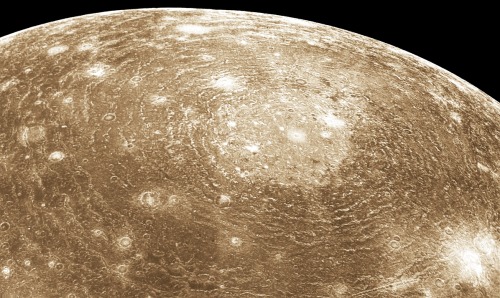
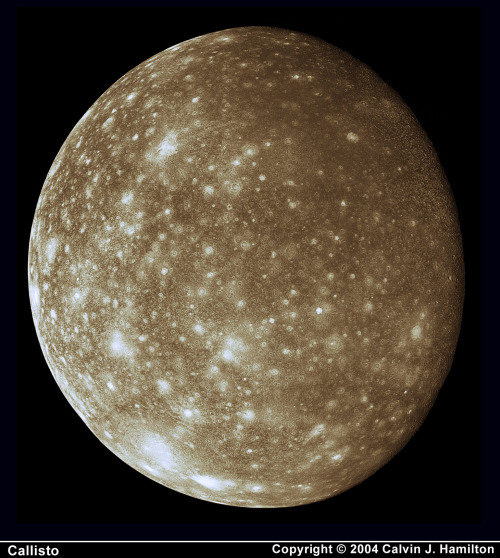
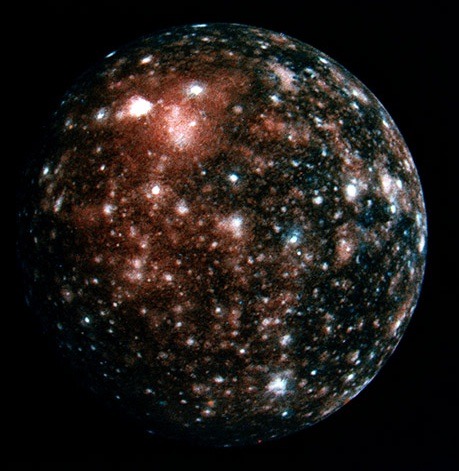

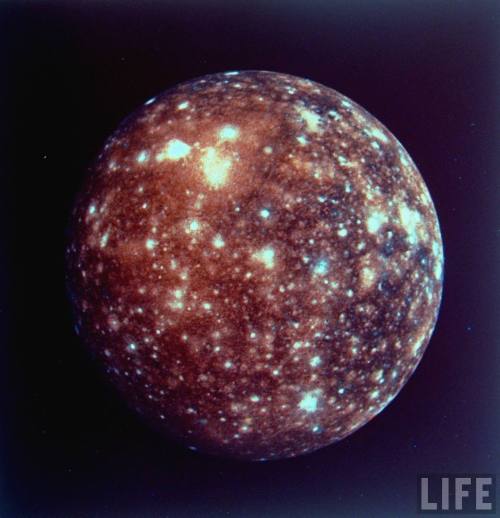
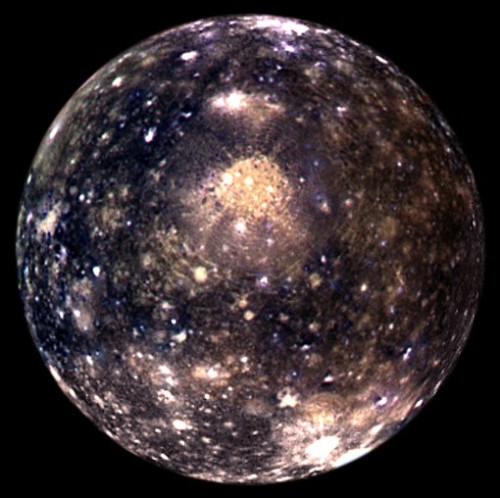

Jupiter’s moon, Callisto.
More Posts from Fillthevoid-with-space and Others
The world's oldest story? Astronomers say global myths about 'seven sisters' stars may reach back 100,000 years https://phys.org/news/2020-12-world-oldest-story-astronomers-global.html

Holy shit, this is cool!
So many cultures call the Pleiades some variation of the "seven sisters" despite only having six visible stars. There only appear to be six because two of the stars are so close together as to appear as one.
The myths also mention one sister leaving or hiding to explain why there's only six. And based off observations and measurements, those two that are so close together used to be visibly separate. One literally has moved to hide.
And based off the similarities between the more commonly known Greek myth and the Aboriginal Australian myth, plus some other stuff, this myth could possibly even date back to when humanity still all resided in Africa!

30 Doradus, located in the heart of the Tarantula nebula, is the brightest star-forming region in our galactic neighborhood. The nebula resides 170,000 light-years away in the Large Magellanic Cloud. Links to very large images in comments.
js
Spacewalkers Successfully Connect Adapter for Commercial Crew Vehicles
ISS - Expedition 50 Mission patch / EVA - Extra Vehicular Activities patch. March 30, 2017 Expedition 50 Commander Shane Kimbrough and Flight Engineer Peggy Whitson of NASA concluded their spacewalk at 2:33 p.m. EDT. During the spacewalk, which lasted just over seven hours, the two astronauts successfully reconnected cables and electrical connections on the Pressurized Mating Adapter-3. PMA-3 will provide the pressurized interface between the station and the second of two international docking adapters to be delivered to the complex to support the dockings of U.S. commercial crew spacecraft in the future.
Image above: Spacewalkers Shane Kimbrough (spacesuit with red stripe on legs) and Peggy Whitson are pictured shortly after exiting the Quest airlock this morning. Image Credits: @Thom_Astro. The duo were also tasked with installing four thermal protection shields on the Tranquility module of the International Space Station. The shields were required to cover the port where the PMA-3 was removed earlier in the week and robotically installed on the Harmony module. During the spacewalk, one of the shields was inadvertently lost. The loss posed no immediate danger to the astronauts and Kimbrough and Whitson went on to successfully install the remaining shields on the common berthing mechanism port. A team from the Mission Control Center at NASA’s Johnson Space Center in Houston devised a plan for the astronauts to finish covering the port with the PMA-3 cover Whitson removed earlier in the day. The plan worked, and the cover was successfully installed, providing thermal protection and micrometeoroid and orbital debris cover for the port. To round out the spacewalk, Kimbrough and Whitson also installed a different shield around the base of the PMA-3 adapter for micrometeoroid protection. The shield was nicknamed a cummerbund as it fits around the adapter similar to a tuxedo’s cummerbund worn around the waist.
Image above: Astronaut Peggy Whitson signs her autograph near an Expedition 50 mission patch attached to the inside the International Space Station. Image Credit: NASA. Having completed her eighth spacewalk, Whitson now holds the record for the most spacewalks and accumulated time spacewalking by a female astronaut. Spacewalkers have now spent a total of 1,243 hours and 42 minutes outside the station during 199 spacewalks in support of assembly and maintenance of the orbiting laboratory. Related links: International docking adapters: https://www.nasa.gov/feature/meet-the-international-docking-adapter Peggy Whitson spacewalk record: https://blogs.nasa.gov/spacestation/2017/03/29/astronaut-peggy-whitson-set-to-break-spacewalk-record-thursday/ Space Station Research and Technology: https://www.nasa.gov/mission_pages/station/research/index.html International Space Station (ISS): https://www.nasa.gov/mission_pages/station/main/index.html Images (mentioned), Text, Credits: NASA/Mark Garcia. Best regards, Orbiter.ch Full article

This photo of Astronaut Charlie Duke’s family has been on the moon for the last 43 years.
via reddit
What is so special about the solar eclipse to you??
Huh, that’s a very good question and I probably answer it differently each time I get asked it. I love the fact that in totality you can see the solar atmosphere and get a chance to see the magnetic field structure of the Sun. This is something that you can’t normally do. I also love the idea that we’re going to be able to test a bunch of ionospheric models with the help of citizen scientist! This again is a very unique opportunity! But probably the thing that seems so special about this particular eclipse is seeing how excited everyone is about it! Most days I sit in my office working on my science (which I think is the best science and most interesting thing in the world- but I’m probably biased about that) and not too many other people in the world are all that excited about it. But with the eclipse, I get to share how cool this science is, and it’s amazing to see everyone get involved!
This is so sweet! What a nice way to spend a Saturday night.
Make Sure You Observe the Moon on October 20
On Saturday, October 20, NASA will host the ninth annual International Observe the Moon Night. One day each year, everyone on Earth is invited to observe and learn about the Moon together, and to celebrate the cultural and personal connections we all have with our nearest celestial neighbor.
There are a number of ways to celebrate. You can attend an event, host your own, or just look up! Here are 10 of our favorite ways to observe the Moon:
1. Look up

Image credit: NASA’s Scientific Visualization Studio/Ernie Wright
The simplest way to observe the Moon is simply to look up. The Moon is the brightest object in our night sky, the second brightest in our daytime sky and can be seen from all around the world — from the remote and dark Atacama Desert in Chile to the brightly lit streets of Tokyo. On October 20, the near side of the Moon, or the side facing Earth, will be about 80 percent illuminated, rising in the early evening.
See the Moon phase on October 20 or any other day of the year!
2. Peer through a telescope or binoculars

The Moon and Venus are great targets for binoculars. Image Credit: NASA/Bill Dunford
With some magnification help, you will be able to focus in on specific features on the Moon, like the Sea of Tranquility or the bright Copernicus Crater. Download our Moon maps for some guided observing on Saturday.
3. Photograph the Moon

Image credit: NASA/GSFC/ASU
Our Lunar Reconnaissance Orbiter (LRO) has taken more than 20 million images of the Moon, mapping it in stunning detail. You can see featured, captioned images on LRO’s camera website, like the one of Montes Carpatus seen here. And, of course, you can take your own photos from Earth. Check out our tips on photographing the Moon!
4. Take a virtual field trip

Image credit: NASA/JPL-Caltech
Plan a lunar hike with Moontrek. Moontrek is an interactive Moon map made using NASA data from our lunar spacecraft. Fly anywhere you’d like on the Moon, calculate the distance or the elevation of a mountain to plan your lunar hike, or layer attributes of the lunar surface and temperature. If you have a virtual reality headset, you can experience Moontrek in 3D.
5. Touch the topography

Image credit: NASA GSFC/Jacob Richardson
Observe the Moon through touch! If you have access to a 3D printer, you can peruse our library of 3D models and lunar landscapes. This model of the Apollo 11 landing site created by NASA scientist Jacob Richardson, is derived from LRO’s topographic data. Near the center, you can actually feel a tiny dot where astronauts Neil Armstrong and Buzz Aldrin left the Lunar Descent Module.
6. Make Moon art

Image credit: LPI/Andy Shaner
Enjoy artwork of the Moon and create your own! For messy fun, lunar crater paintings demonstrate how the lunar surface changes due to consistent meteorite impacts.
7. Relax on your couch

Image credit: NASA’s Scientific Visualization Studio/Ernie Wright
There are many movies that feature our nearest neighbor, from A Voyage to the Moon by George Melies, to Apollo 13, to the newly released First Man. You can also spend your evening with our lunar playlist on YouTube or this video gallery, learning about the Moon’s role in eclipses, looking at the Moon phases from the far side, and seeing the latest science portrayed in super high resolution. You’ll impress all of your friends with your knowledge of supermoons.
8. Listen to the Moon
Video credit: NASA’s Scientific Visualization Studio/Ernie Wright
Make a playlist of Moon songs. For inspiration, check out this list of lunar tunes. We also recommend LRO’s official music video, The Moon and More, featuring Javier Colon, season 1 winner of NBC’s “The Voice.” Or you can just watch this video featuring “Clair de Lune,” by French composer Claude Debussy, over and over.
9. See the Moon through the eyes of a spacecraft

Image credit: NASA/GSFC/MIT
Visible light is just one tool that we use to explore our universe. Our spacecraft contain many different types of instruments to analyze the Moon’s composition and environment. Review the Moon’s gravity field with data from the GRAIL spacecraft or decipher the maze of this slope map from the laser altimeter onboard LRO. This collection from LRO features images of the Moon’s temperature and topography. You can learn more about our different missions to explore the Moon here.
10. Continue your observations throughout the year

Image credit: NASA’s Scientific Visualization Studio/Ernie Wright
An important part of observing the Moon is to see how it changes over time. International Observe the Moon Night is the perfect time to start a Moon journal. See how the shape of the Moon changes over the course of a month, and keep track of where and what time it rises and sets. Observe the Moon all year long with these tools and techniques!
However you choose to celebrate International Observe the Moon Night, we want to hear about it! Register your participation and share your experiences on social media with #ObserveTheMoon or on our Facebook page. Happy observing!
Make sure to follow us on Tumblr for your regular dose of space: http://nasa.tumblr.com.

UGC 12591: The Fastest Rotating Galaxy Known : Why does this galaxy spin so fast? To start, even identifying which type of galaxy UGC 12591 is difficult – it has dark dust lanes like a spiral galaxy but a large diffuse bulge of stars like a lenticular. Surprisingly observations show that UGC 12591 spins at about 480 km/sec, almost twice as fast as our Milky Way, and the fastest rotation rate yet measured. The mass needed to hold together a galaxy spinning this fast is several times the mass of our Milky Way Galaxy. Progenitor scenarios for UGC 12591 include slow growth by accreting ambient matter, or rapid growth through a recent galaxy collision or collisions – future observations may tell. The light we see today from UGC 12591 left about 400 million years ago, when trees were first developing on Earth. via NASA
js
Tampons were packed with their strings connecting them, like a strip of sausages, so they wouldn’t float away. Engineers asked Ride, “Is 100 the right number?” She would be in space for a week. “That would not be the right number,” she told them. At every turn, her difference was made clear to her. When it was announced Ride had been named to a space flight mission, her shuttle commander, Bob Crippen, who became a lifelong friend and colleague, introduced her as “undoubtedly the prettiest member of the crew.” At another press event, a reporter asked Ride how she would react to a problem on the shuttle: “Do you weep?”
Astronaut Sally Ride and the Burden of Being “The First” (via dinosaurparty)

Spacewalk complete and new astronaut record set! Shane Kimbrough and Peggy Whitson of NASA successfully reconnected cables and electrical connections on an adapter-3 that will provide the pressurized interface between the station and the second of two international docking adapters to be delivered to the complex to support the dockings of U.S. commercial crew spacecraft in the future. The duo were also tasked with installing four thermal protection shields on the Tranquility module of the International Space Station.
Having completed her eighth spacewalk, Whitson now holds the record for the most spacewalks and accumulated time spacewalking by a female astronaut. Spacewalkers have now spent a total of 1,243 hours and 42 minutes outside the station during 199 spacewalks in support of assembly and maintenance of the orbiting laboratory.
Astronaut Thomas Pesquet of ESA posted this image and wrote, ’ Shane and Peggy on their way to their first #spacewalk tasks.’
Credit: ESA/NASA
Cosmos is a Greek word for the order of the universe. It is, in a way, the opposite of Chaos. It implies the deep interconnectedness of all things. It conveys awe for the intricate and subtle way in which the universe is put together.
Carl Sagan, Cosmos (via wordsnquotes)
-
 clawingatshadows reblogged this · 1 week ago
clawingatshadows reblogged this · 1 week ago -
 clawingatshadows liked this · 1 week ago
clawingatshadows liked this · 1 week ago -
 paboratti liked this · 1 week ago
paboratti liked this · 1 week ago -
 xketamine liked this · 1 week ago
xketamine liked this · 1 week ago -
 the-real-pink-ninja liked this · 4 weeks ago
the-real-pink-ninja liked this · 4 weeks ago -
 midnight-reader-morning-sleeper liked this · 1 month ago
midnight-reader-morning-sleeper liked this · 1 month ago -
 worldweaverofmediocrity reblogged this · 1 month ago
worldweaverofmediocrity reblogged this · 1 month ago -
 catkin-morgs-kookaburralover liked this · 1 month ago
catkin-morgs-kookaburralover liked this · 1 month ago -
 the-land-of-eternal-winter-novel reblogged this · 1 month ago
the-land-of-eternal-winter-novel reblogged this · 1 month ago -
 jellycaustic reblogged this · 1 month ago
jellycaustic reblogged this · 1 month ago -
 blade-liger-4ever liked this · 1 month ago
blade-liger-4ever liked this · 1 month ago -
 vitamaeternum reblogged this · 1 month ago
vitamaeternum reblogged this · 1 month ago -
 vitamaeternum liked this · 1 month ago
vitamaeternum liked this · 1 month ago -
 lenjaminmacbuttons liked this · 1 month ago
lenjaminmacbuttons liked this · 1 month ago -
 polyglot-thought-2 liked this · 1 month ago
polyglot-thought-2 liked this · 1 month ago -
 scribbly-bear liked this · 1 month ago
scribbly-bear liked this · 1 month ago -
 pensandsliverswords reblogged this · 1 month ago
pensandsliverswords reblogged this · 1 month ago -
 pensandsliverswords liked this · 1 month ago
pensandsliverswords liked this · 1 month ago -
 herebesherlocks reblogged this · 1 month ago
herebesherlocks reblogged this · 1 month ago -
 professor-cold-ramen liked this · 1 month ago
professor-cold-ramen liked this · 1 month ago -
 learlir liked this · 1 month ago
learlir liked this · 1 month ago -
 thejonderettegirl liked this · 1 month ago
thejonderettegirl liked this · 1 month ago -
 tzarina-alexandra reblogged this · 1 month ago
tzarina-alexandra reblogged this · 1 month ago -
 angelbornaltruist liked this · 1 month ago
angelbornaltruist liked this · 1 month ago -
 liamins liked this · 1 month ago
liamins liked this · 1 month ago -
 greengrace reblogged this · 1 month ago
greengrace reblogged this · 1 month ago -
 alchemisticramblings reblogged this · 1 month ago
alchemisticramblings reblogged this · 1 month ago -
 alchemisticramblings liked this · 1 month ago
alchemisticramblings liked this · 1 month ago -
 inkyrainstorms liked this · 1 month ago
inkyrainstorms liked this · 1 month ago -
 fancytomato reblogged this · 1 month ago
fancytomato reblogged this · 1 month ago -
 fancytomato liked this · 1 month ago
fancytomato liked this · 1 month ago -
 alcadanon reblogged this · 1 month ago
alcadanon reblogged this · 1 month ago -
 alcadanon liked this · 1 month ago
alcadanon liked this · 1 month ago -
 marie-pippins liked this · 1 month ago
marie-pippins liked this · 1 month ago -
 indynerdgirl reblogged this · 1 month ago
indynerdgirl reblogged this · 1 month ago -
 starfayy liked this · 1 month ago
starfayy liked this · 1 month ago -
 livingandthriving liked this · 1 month ago
livingandthriving liked this · 1 month ago -
 aevarswall reblogged this · 1 month ago
aevarswall reblogged this · 1 month ago -
 aevarswall liked this · 1 month ago
aevarswall liked this · 1 month ago -
 screwtornadowarningsimsouthern reblogged this · 1 month ago
screwtornadowarningsimsouthern reblogged this · 1 month ago -
 argen-lobo-ridder reblogged this · 1 month ago
argen-lobo-ridder reblogged this · 1 month ago -
 banana-with-a-bow-tie reblogged this · 1 month ago
banana-with-a-bow-tie reblogged this · 1 month ago -
 ladypyewacket reblogged this · 1 month ago
ladypyewacket reblogged this · 1 month ago -
 noelia-diaz06 liked this · 1 month ago
noelia-diaz06 liked this · 1 month ago -
 strawberry-muffin-crisis liked this · 1 month ago
strawberry-muffin-crisis liked this · 1 month ago -
 tealfoxarts liked this · 1 month ago
tealfoxarts liked this · 1 month ago -
 vio1315 liked this · 1 month ago
vio1315 liked this · 1 month ago -
 jacepi-time reblogged this · 1 month ago
jacepi-time reblogged this · 1 month ago -
 toothpaste-dragon liked this · 1 month ago
toothpaste-dragon liked this · 1 month ago
A podcast project to fill the space in my heart and my time that used to be filled with academic research. In 2018, that space gets filled with... MORE SPACE! Cheerfully researched, painstakingly edited, informal as hell, definitely worth everyone's time.
243 posts